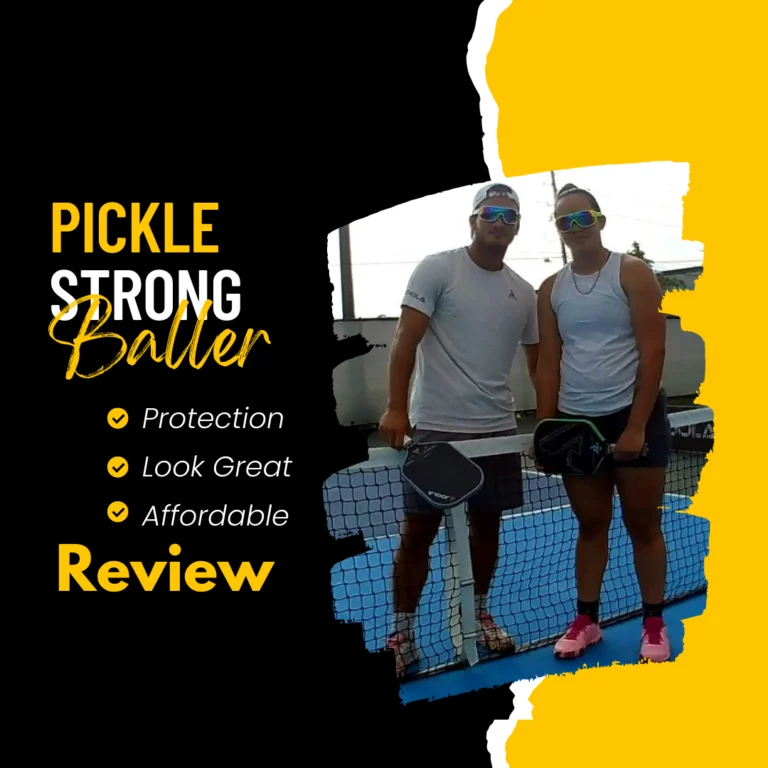Pickleball Paddle Grit
Pickleball Paddle Grit: Your Ultimate Guide
Every serve, every volley, every game… and our trusty pickleball paddles seem to lose their edge a bit quicker than we’d like. It’s not just you noticing your paddle’s grit fading away, leaving you craving that control and spin you once had.
Grit on a pickleball paddle is essential for controlling the ball’s spin. Yet, why does this grit wear off so quickly? Many players wonder why this grit seems to wear off so quickly, affecting gameplay.
Understanding Pickleball Paddle Grit
The concept of grit on a pickleball paddle involves a textured surface. This surface helps players achieve more spin on the ball. The United States of America Pickleball Association (USAP) has set guidelines on how gritty a paddle’s surface can be. These USAP Equipment Standards ensure fair play across the sport.
Types of Paddle Grit
Different types of grit are used on paddles, each with its advantages and durability. We categorize paddle grit into three types: paint grit, added textures, and raw carbon fiber.
Paint Grit
Paint grit provides a rough surface when first applied. However, its durability is low. Professional players may find themselves needing new paddles frequently because the paint grit wears down quickly, diminishing the paddle’s ability to spin the ball effectively.
Added Textures
Paddles with added textures offer a middle ground in terms of durability. These textures are more durable than paint grit but still vary in how long they last. Predicting their lifespan is challenging, as it depends on numerous factors, including playing style and frequency.
Raw Carbon Fiber
Paddles made from or with raw carbon fiber surfaces tend to have the most durable grit. They maintain their ability to impart spin over a longer period. Even so, no paddle is completely immune to wear and tear. Over time, even the most durable textures will begin to smooth out, affecting the paddle’s performance.
USAP Equipment Rules on Grit
The USAP has established strict regulations regarding the roughness of a pickleball paddle’s surface. These regulations are in place to prevent excessive spin that could unfairly advantage some players. For comprehensive details on these rules, you can visit the USAP Equipment Standards page.
Why Paddles Lose Grit Quickly
Pickleball paddles often lose their grit rapidly, a significant concern for active players. Frequent use can lead to noticeable wear in just a few weeks, impacting the game’s spin aspect critically.
Frequently Asked Questions
How to Restore Grit on a Pickleball Paddle?
To date, the primary solution for players seeking to restore their paddle’s original grit level has been to purchase a new one. This is due in part to the technical challenges involved in creating a durable, long-lasting texture that can withstand the rigors of play. Manufacturers are still exploring technologies and materials that can enhance the longevity of paddle textures without necessitating frequent replacements.
However, this situation raises an intriguing economic and strategic question: Why would manufacturers rush to solve this problem? If a paddle comes with a level of grit that barely passes the USA Pickleball Association’s (USAP) equipment rules, but loses its texture due to regular play, it naturally leads to increased demand for replacements. This cycle benefits manufacturers economically, as players are compelled to buy new paddles more frequently. This approach, while advantageous for paddle producers, places an additional burden on consumers who seek to maintain optimal play conditions without the constant need for new equipment.
This dynamic between durability, performance, and economic incentives underlines a complex aspect of the pickleball equipment market. Players and regulators alike may need to push for higher durability standards to ensure that paddles not only meet the minimum requirements upon purchase but also retain their essential characteristics over time. Addressing this issue could lead to advancements in paddle design and materials, ultimately benefiting the sport and its enthusiasts by balancing performance, durability, and cost.
Why is Paddle Grit Important?
Grit plays a crucial role in a player’s ability to spin the ball. However, it’s not the only factor that affects spin. The player’s technique and the paddle’s handle length, face shape, thickness, grit, balance, and weight also contribute significantly to a player’s control and spin capabilities.
Pickleball Paddle Grit
The significance of grit on a pickleball paddle cannot be understated, particularly in its contribution to spinning the ball. As part of a broader set of design considerations, pickleball paddle grit is a critical focus for players seeking to optimize their performance. The pickleball community eagerly anticipates future innovations that will maintain paddle grit effectively over time.








One Comment